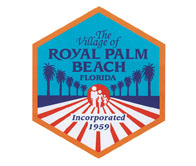The Royal Palm Beach Planning & Zoning Commission approved the village’s own application Monday for a large-scale comprehensive plan amendment changing the 152-acre former wastewater treatment plant site at the north end of Crestwood Blvd. from utility use to single-family residential use.
The land use change resolves three years of uncertainty over the future of the decommissioned treatment plant site. The Royal Palm Beach Village Council decided in April to pursue a low-density residential use for the area.
The plant became surplus property when the village sold its water utility to Palm Beach County. Since then, council members have considered several ideas for the property.
An early plan suggested using the land for a commercial office business/research park, which many nearby residents protested. A plan for largely residential use also got shot down when residents said they wanted more input on what would be done with the land.
In April 2011, the Wastewater Treatment Plant Task Force was formed. After members met for several months, they recommended that 55 percent of the site be single-family residential, which would allow 207 homes at 2.5 units per acre; 25 percent recreational; 10 percent industrial; and 10 percent commercial. The industrial and commercial uses were to be low-intensity, such as storage for recreational vehicles and boats, and education centers. Thirty percent would have been devoted to natural areas for recreational uses.
The site, at the northwest quadrant of Crestwood Blvd. and the M-1 Canal, now has a boat and RV storage lot on it operated by the village, abandoned percolation ponds and a vacant 10,000-square-foot office and warehouse building.
Site Plan Development Coordinator Kevin Erwin said staff had found the proposed land use change to be compatible with surrounding land uses, which includes the Saratoga single-family development to the west and south, single-family homes across the M-1 Canal to the east, and The Acreage across the M-1 Canal to the north.
The change does not affect a county-run utility plant at the northeastern part of the property.
Commissioner Barbara Powell requested a more detailed map showing well-field protection areas and pointed out that the packet erroneously referred to the Department of Community Affairs for transmittal of the land-use amendment. That state agency is now called the Department of Economic Opportunity.
Powell also noted that there was a reference in the geotechnical report to possible lead contamination in the site’s northeastern corner from a former shooting range. Planner Bradford O’Brien said that would be considered during site planning. Erwin noted that the former shooting range area is within the county’s 15 acres.
One public comment card was received from Doris Wolman asking if any developers had expressed an interest in the property and if so, whether they’d proposed a density. Erwin said there had been none.
“This is the first stage, and the village is getting it ready to put it on the market for future development, but it’s way too early in the process for any developers to come forward,” Erwin said.
Commission Alternate Michael Axelberd, who sat on the Wastewater Treatment Plant Task Force, said he fully supported the plan. “It’s in keeping with the look of the community,” he said. “It was no place to put commercial. I think housing is a great fit for this.”
Commissioner Joseph Boyle, who was also on the task force, said he understood that the approval would be for the general land use.
“Any specifics that would have to do with drainage, structure or anything would have to be addressed at the site plan level, am I correct?” Boyle asked.
“Correct, concurrent with development,” Erwin said.
Commission Chair Jackie Larson said that from everything that had been presented, low-density residential was the most appropriate.
Powell made a motion to approve the application, which carried 5-0.









Well there’s a great disclosure for Realtors to their clients: Home built on former waste water treatment site.